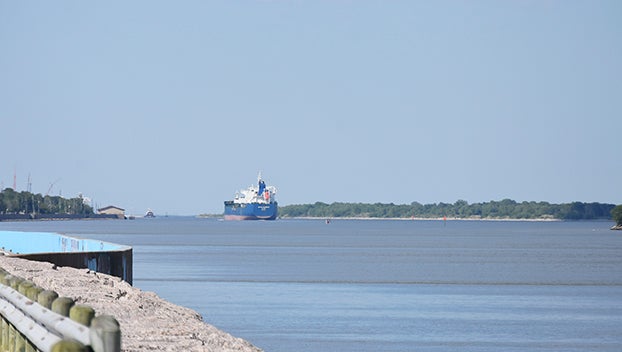MOORE OUTDOORS: Zebra mussels deserve closer look in Texas
Published 12:02 am Sunday, July 2, 2017
It was the clearest water I had ever seen.
Nothing compared to it. Not the islands of the Pacific nor the famously pristine waters of Cozumel, Mexico where I had dove in search of sharks, moray eels and host of a tropical fish in the past.
This was in an unusual location for such clarity: Skaneatles Lake (pronounced “Skinny Atlas” — I kid you not) in west-central New York. Fishing in 50 feet of water, I could see the bottom and pick out yellow perch, smallmouth bass and huge carp.
For someone who fishes the stained Sabine River and loves sight fishing, this was a novelty but to locals it has a dark undertone. The clarity is the result of zebra mussels.
Zebra mussels are a bivalve with two asymmetrical shells connected by a ligament called a hinge. Originating from Eastern Europe, they hitchhiked onto commercial vessels and landed in the Great Lakes in 1988. They are now present in 29 states and as you have probably concluded, Texas is now one of them.
According to Texas Parks & Wildlife Department (TPWD) officials, zebra mussels latch onto any hard surface in water, including rocks, rope, pipes, and other bivalves.
“By multiplying so quickly and attaching to hard surfaces, zebra mussels can shut down a city’s water supply by colonizing inside pipelines. They can filter out an aquatic ecosystem of its smallest nutrients, leading to declines in the fish population. They can also sink buoys and docks and damage boats, and other structures in the water.”
They have been found in numerous lakes in Northeast Texas.
“Unfortunately, from an environmental and economic standpoint, this is very bad news,” said TPWD Executive Director Carter Smith.
“For a host of reasons the implications of this discovery are substantial to Texas waters and their future use and management. We intend to continue working with our partners to do everything reasonably possible to try and prevent the further spread of this harmful invasive species.”
Perhaps the most well documented impacts are native mussels, which are an important food source for species like blue catfish.
Zebra mussels are anchoring themselves by the thousands to native mussels making it impossible for the native mussel to function according to the U.S. Geological Survey (USGS).
Zebra mussels are filtering the Great Lakes at an amazing rate, making the lake very clear according to USGS officials.
“Most people assume that this increased visibility in the water must mean the water is “cleaner”. Not true. All they have done is filter out all the algae which normally would be food for native microscopic organisms.”
Interestingly the USGS Great Lakes regional branch said they have some positive impacts.
“As the lakes clear, the brighter light levels cause aquatic plants to increase in number and size. This increased plant growth can be beneficial to some fish such as northern pike and to yellow perch.”
Studies so far have shown no significant negative impact on fish populations in zebra mussel lakes. Most of the studies have been conducted in northern waters so the jury is still out on how it might affect largemouth bass for example in Texas waters.
According to TPWD one zebra mussel can produce 30,000 to a million offspring in just one year. Zebra mussels grow quickly and in some cases can become sexually mature in 3-12 months, living for two to three years.
TPWD has created strict regulations to try and stop the zebra mussel’s spread. We have covered them numerous times on these pages and they are available at tpwd.texas.gov.
Officials in the north however are considering another source of spreading: waterfowlers.
“After hunting, take a few minutes to clean plants and mud and drain water from duck boats, decoys, decoy lines, waders and push poles,” said Christine Herwig, Minnesota DNR invasive species specialist.
“It’s the key to avoiding the spread of aquatic invasive species in waterfowl habitat.”
DNR recommends that waterfowl hunters switch to elliptical, bulb-shaped or strap decoy anchors and that waterfowl hunters should also drain water from boats and equipment.
Waterfowl hunters should remember that they must cut cattails or other plants above the water line when using them as camouflage for boats or blinds.
Retrievers are even being targeted as a potential source of spread but there has no verification as of yet.
Officials in Kansas say birds do not transport zebra mussels but New Hampshire’s Department of Environmental Services contradicts this and also gives some other offbeat potential hosts.
“Adult and juvenile mussels are transported by waterfowl and by attachment to boat hulls, crayfish and turtles,” they said.
In terms of economic impact zebra mussels are brutal. Several billion dollars have been spent fighting them and cleaning them off pipes and other facets of industry.
The impact however on the environment is certainly powerful as well but the jury is still out on how it will affect Texas waters in the long run.
•
To contact Chester Moore, email him at chester@kingdomzoo.com. You can hear him on “Moore Outdoors” Fridays from 6-7 p.m. on Newstalk AM 560 KLVI.






